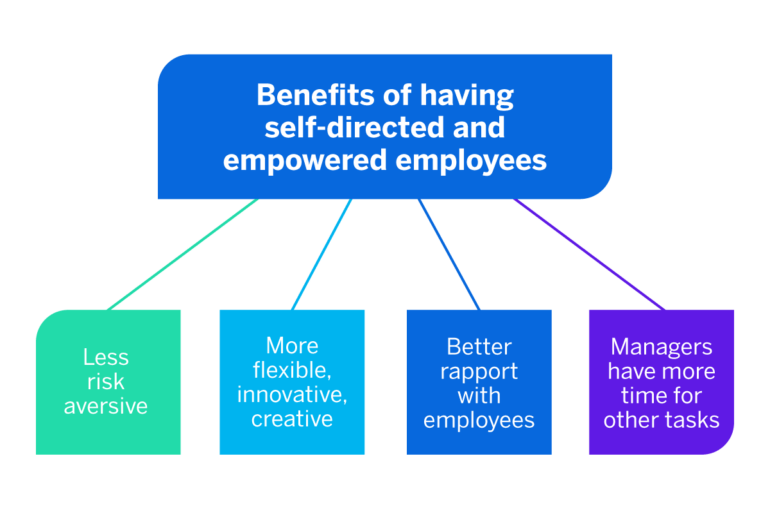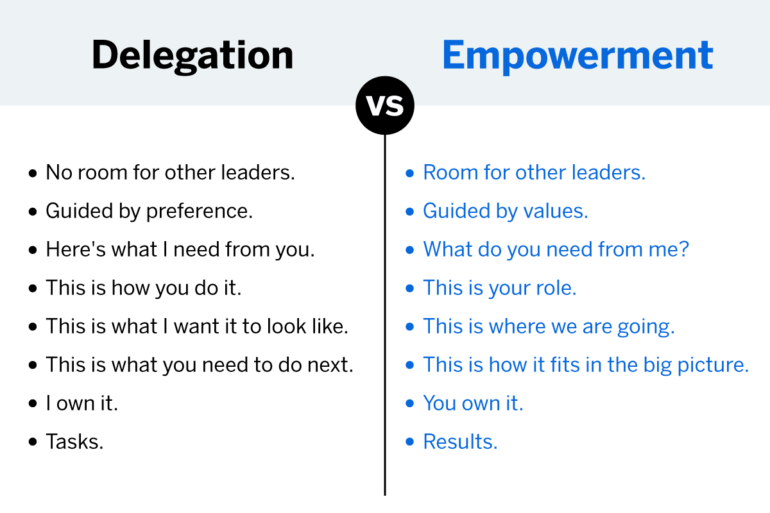
Customer Experience
7 tips on how to improve Customer Experience (CX) by empowering employees
If you’re looking to raise the bar on customer experience, look no further than your employees — harnessed in the right way, they’re one of the most effective levers any organization has. Find out how you can empower your people to deliver better experiences for customers.
Here’s how you can strike the right balance between supporting employees and giving them more control over their working life.
What is employee empowerment?
Employee empowerment is giving employees autonomy and freedom over their roles. It means trusting them to make independent decisions about how to do their jobs well and giving them what they need to do their best work.
It can also be helpful to define employee empowerment in terms of what it isn’t – it’s the polar opposite of micro-managing. Have you heard of those teams where every possible action must be run past the boss, creating a bottleneck that strangles productivity and innovation? It’s never a recipe for stronger job performance or a positive workplace culture, and it doesn’t help employee engagement either.
Being able to avoid scenarios like this is one of the reasons it’s so important to empower employees.

But it’s not just a case of delegating important responsibilities to your people, dusting your hands off and allowing them to get on with things. Employee empowerment needs to be balanced with support. Because each person’s skills, personality attributes and confidence levels are different, each employee requires a different approach.
What’s more, these requirements will change over time, making employee empowerment a continuous process of responsiveness and communication. Managers need to empower each person effectively by continually listening and responding to their growth, challenges and strengths as part of a program of employee development.
Benefits of empowering employees
Empowered employees are:
More likely to be engaged at work
Organizational trust and psychological empowerment are predictors of employee engagement, according to recent research by Ugwu et al.
Able to solve problems themselves, rather than passing them upwards
When employees are empowered to make decisions themselves, they not only feel better about themselves and their workplace, they make fewer requests for manager approval or review, meaning that managers can focus their time on more meaningful contributions such as coaching and career development.
More likely to contribute ideas and innovations
“Empowered employees are more likely to be powerful, confident individuals, who are committed to meaningful goals and demonstrate initiative and creativity to achieve them,” say Lee et al. reporting their research in Harvard Business Review
Willing to go the extra mile
Only 4% of employees are willing to make an extra effort when empowerment is low in an organization, vs. 67% when empowerment is high, according to a study reported in Forbes.
Able to feel ownership and pride over their work
The more control people have over their jobs, the more ownership they will feel over the outcome. And this matters a lot. In our recent survey of US employees, making a positive impact at work was the number one achievement people wanted in their jobs. This motivator was chosen 3x more often than ‘make a lot of money’.
More likely to trust senior leadership
According to research reported by Harvard Business Review, employees are more likely to trust leaders who they perceive as being empowering.

Types of employee empowerment
Here are some of the areas where employee empowerment can take place.
1. Time management
This kind of empowerment could take the form of flexible working, unlimited annual leave, or goal-based rather than time-based measurement of an employee’s contributions. It places the responsibility for getting the job done in the employee’s hands, so they can decide how much time they need to allocate to doing a great job, and when they need to do it. Our research found that 87% of employees want to be in control of their working hours and have their performance measured purely on results, indicating that this factor could have a strong impact on employee satisfaction.
2. Budgets
Giving an employee control over a budget is a strong indicator of trust. You’re giving them resources to use as they see fit for the company’s advantage, reflecting that you believe in their decision-making and their knowledge of the business’s best interests. This type of empowerment can also work with expenses. Rather than policies strictly limiting what someone can spend on disbursements, hotels or transport, employees feel empowered to make reasonable decisions that don’t leave them, or the company, unreasonably out of pocket.
3. Development
Investing in employee development is a form of empowerment that works on a couple of levels. As well as equipping them with the new skills, knowledge and tools to do their jobs autonomously, you can give people control over how their career development progresses.
What kind of training courses should your employee be sent on? Would attending a certain seminar or convention be beneficial for their role? Although HR professionals and managers of direct reports can still contribute valuable ideas, why not allocate the employee a training and development budget and let them decide for themselves?
4. Transparency
You control how much information about the company’s goals, performance and financial health you share with employees. Greater transparency means greater employee empowerment, especially when it goes hand in hand with employee contributions. Reaching out to your wider workforce for their input on important decision-making can help increase their sense of ownership and trust.

The common factor in all these forms of employee empowerment is trust. In each instance, a bad actor could choose to abuse the company’s policies to their own advantage. But the benefits often outweigh the risks, paying back in terms of manager workload, HR processes, simplified paperwork, a culture of respect and honesty, and of course the employee experience itself.
7 ways to make employees feel more empowered
1. Start with meeting employees’ needs
It should go without saying that empowering employees starts with meeting their foundational needs. Imagine a manager asking an employee to go above and beyond to solve a customer problem when they don’t feel supported or adequately educated to do so. Different employees have different needs, so the first step is to learn where your employees are at and what their requirements are.
Organizations looking to drive empowerment and autonomy need to address any gaps between what employees expect and what the organization is currently delivering. To do that, you need to have the right tools in place. Employee experience programs use feedback, listening and action to find and resolve gaps.
2. Empower, don’t just delegate
Make sure employees perceive your empowerment drive as a way to give them a better experience, rather than a way to get them to do whatever you need, or worse, take on responsibilities above their pay-grade. Checking whether employees feel overwhelmed, under-stimulated or just right with their level of empowerment can be part of regular development communications between employees and managers. This kind of sense-checking could make the difference between employees who feel confident and employees with poor job satisfaction.

It may also be helpful to monitor employee perceptions about empowerment as part of your wider employee engagement listening program, as this will give them an opportunity to express themselves anonymously. It will also give you an organization-wide snapshot of whether the majority of employees feel empowered – which will have an impact on the organization’s culture.
3. Align your internal values and cultural norms with employee empowerment
The values and behaviors of your organization need to align with the levels of autonomy and trust you are encouraging employees to embrace. This process is critical to the overall discipline of experience management – it ensures that the desired outcome translates to the day-to-day priorities and behaviors of employees.
5. Provide an outlet for the employee voice
Two-way communication is an important part of employee engagement, so make sure you have a robust listening program in place to gather employee opinions and feedback. This could take the form of regular employee experience surveys, listening posts, even an anonymous suggestion box to ensure honest feedback.
Communication matters – especially communication about communication. Encourage employees to have their say and let them know you are seeking their feedback. But just as importantly they need to know you are listening and acting on it. Make sure your internal communications tie leadership decision-making to the employee feedback that informed it, closing the loop with your people.
The bar is still fairly low for employee listening. According to our research, 61% of employees across 24 countries agree that their primary employer needs to do a better job of listening to their feedback
6. Recognize and incentivize employee empowerment
If you’re working towards empowering employees, it makes sense to reward empowered behaviors. Build empowerment into your recognition and rewards program, celebrating initiative and decision-making that has contributed positively to outcomes for people, teams and the company as a whole.
7. Use local leaders to create empowering environments
Particularly in organizations where you have multiple branches or outlets outside of head office, for example retail or hospitality, local managers play an important role in shaping the experience for their teams.
In a recent meta-analysis researchers found that “Leaders who were perceived as more empowering were more likely to delegate authority to their employees, ask for their input, and encourage autonomous decision-making.”
Providing managers with training and support to be empowering leaders can help to promote an environment where employees are encouraged to take ownership and act autonomously when it comes to delivering on the customer experience.
Why empowered employees = better CX
If you’re looking to raise the bar on customer experience, look no further than your employees. Invest in them the right way, and they’re among the most effective levers an organization has.
The link between employee experience (EX) and customer experience (CX) has been well documented, including a study by the XM Institute that found CX leaders consistently demonstrate better EX results.
When employees feel cared for and supported, they go above and beyond for the customers they serve, are strong brand ambassadors, and often contribute innovative ideas that help the company grow.
Connecting employees and customers
Providing employees with timely and relevant customer feedback is the most direct way to engage them in improving CX. Customer feedback helps employees to better understand the customer’s needs and personalize the experience they deliver.
Customers expect nothing less. When they contact an organization to resolve an issue, they expect the employee they speak with to have the full background on their case. By connecting your customer feedback to the systems and processes employees already use you can make employees’ lives easier and help them feel empowered to help customers. Plus, you’ll ensure that customer issues are dealt with more effectively, helping to deliver a better experience for customers.
Aligning your customer and employee experience programs is an essential step in transforming your organization around experiences. With your people motivated, engaged and enabled, you can deliver positive experiences for your employees, your customers and your business’ bottom line.
Find out more about empowering your employees with our EX25 methodology DOWNLOAD NOW